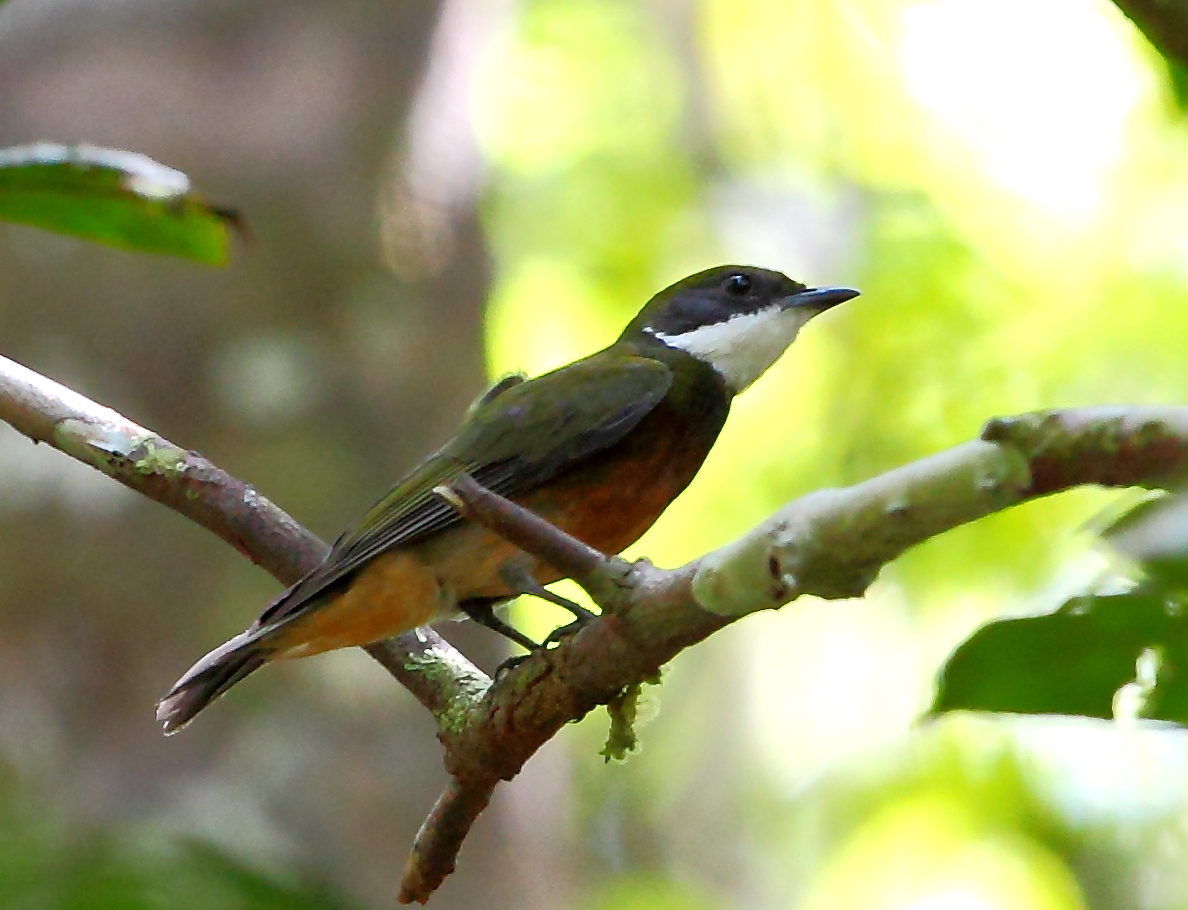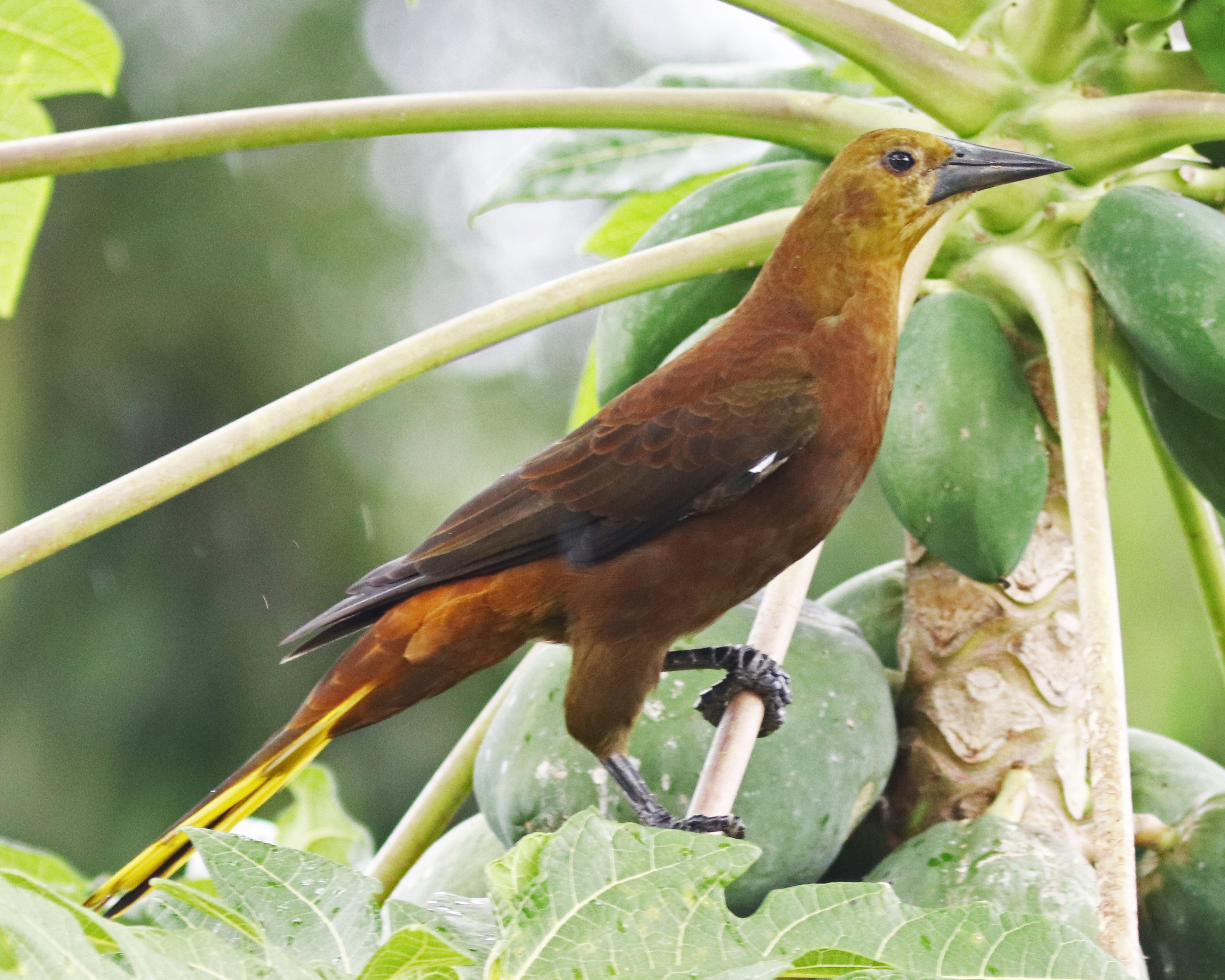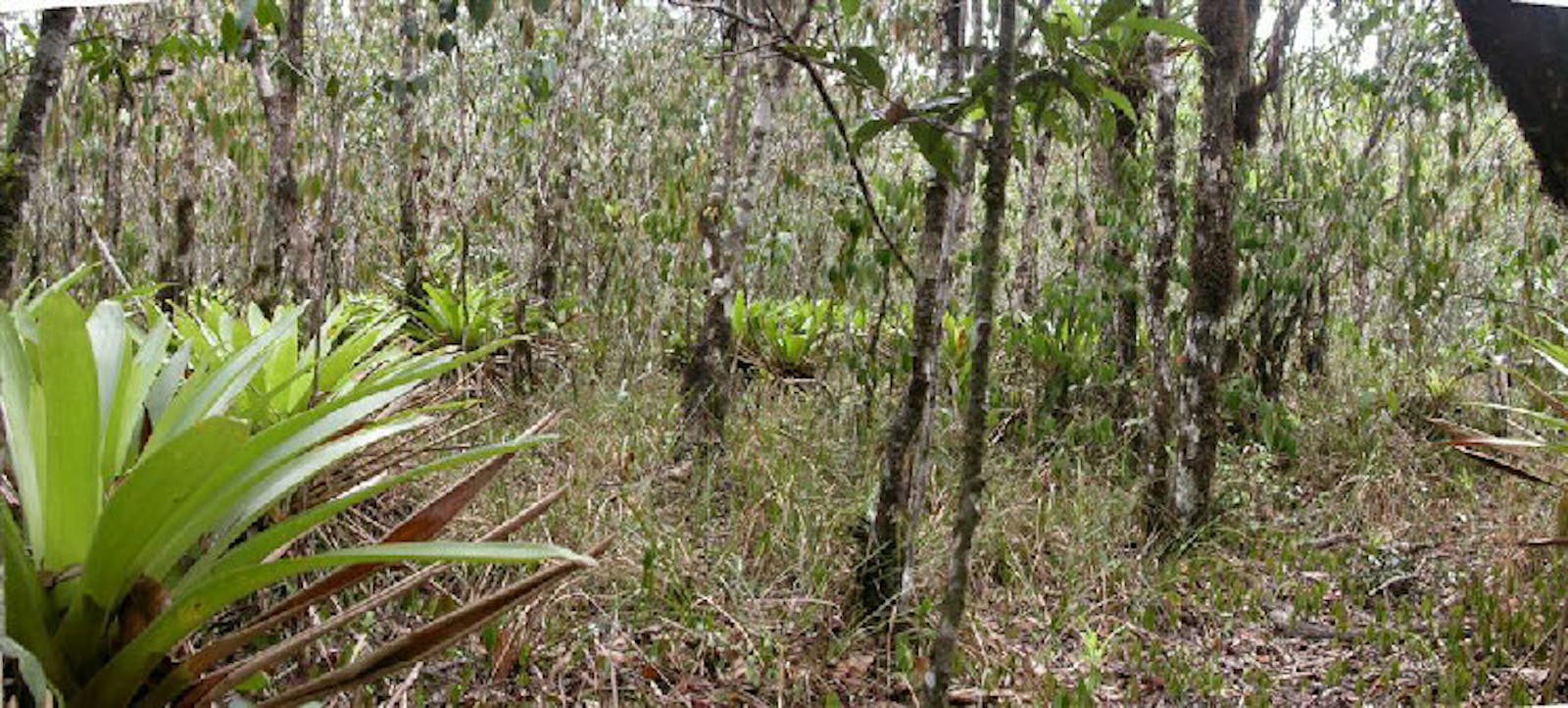Rio Negro Campinarana
The ecoregion’s land area is provided in units of 1,000 hectares. The conservation target is the Global Safety Net (GSN1) area for the given ecoregion. The protection level indicates the percentage of the GSN goal that is currently protected on a scale of 0-10. N/A means data is not available at this time.
Bioregion: Northern Amazonian Forests (NT20)
Realm: Southern America
Ecoregion Size (1000 ha):
9,663
Ecoregion ID:
498
Conservation Target:
89%
Protection Level:
7
States: Brazil, Venezuela, Colombia
The Rio Negro Campinarana ecoregion has unique habitats of extremely poor sandy soil types and highly specialized vegetation that are evolved to adapt. These habitats also host a wide variety of primitive faunal species, including the endangered Marinkelle's sword-nosed bat, the largest species of its kind with one of the smallest distributions—fewer than five areas in Colombia. Feeding mostly on flying insects, they are expert night flyers that use their long pointy noses for highly precisive echolocation to catch prey mid-air. They live in caves and rock formations in and around tepui formations of the Guianan Shield complex.
The Rio Negro Campinarana ecoregion occur as isolated patches “sand forest” along the Rio Negro and Rio Branco basins in Venezuela and northern Brazil. These isolated patches of low nutrient soils host a range of vegetation types from herbaceous savannas to closed-canopy forests. Patches of similar vegetation occur in eastern Colombia as well. Some patches cover thousands of square kilometers. Variably called 'Rio Negro caatinga,’ 'campinarana' or 'heath forest’.

The flagship species of the Rio Negro Campinarana ecoregion is the red-faced spider monkey. Image credit: Creative Commons
The type of soil determines the vegetation type. Campinarana vegetation develops around circular swampy depressions of nutrient-poor acidic soil, usually highly leached white sands, within a matrix of lowland tropical moist forest. The Curicuriari, Uaupés, Negro, and Issana Rivers influence these areas. They have a climate of high temperature and relative humidity. The annual average is 24°C, slightly higher than the surrounding humid forests because of the open canopy. Annual rainfall ranges from 2,500 to 3,000 mm and is evenly distributed throughout the year.
Campinarana is represented by vegetation types ranging from herbaceous savannas dominated by lichens and grasses, to scrub forest with bare sand and herbaceous plants intermixed with shrubs and small trees less than 7 m tall. Woodlands of shrubs, trees, and forests as high as 20 to 30 m even out the continuum of structural phases of the campinarana. Low biomass, high-light penetration, and absence of vines, tree buttresses, and lianas are characteristics of all phases. Epiphytic orchids and bromeliads are abundant.

Yellow crowned Manakin. Image credit: Hector Bottai, Creative Commons
The tree stems are generally slender, less than 200 mm diameter, and often twisted. The plant communities are characterized by the dominance of one or two species, giving individual patches lower plant richness than the neighboring species-rich forest. The majority of species occurring on the campinarana are exclusive to this vegetation type. Some indicator species of Amazonian campinarana are dangle berry, and Ducke. Some species occur in both high and low forests and low woodlands such as families of Legumes, evergreens, and shrubs.
The Rio Negro Campinarana ecoregion hosts high numbers of endemic plants and some very primitive species, such as the cycad Zamia. As with plants, animal diversity is lower in the campinarana than in the surrounding tropical moist forest; just over 150 mammal species are reported. Mammals that have a restricted distribution include various primates such as white-faced sakis, black uakari monkeys, black spider monkeys, tamarins, bats, and rodents, such as Brazilian squirrels, rats, porcupines, and spiny rats. Bird richness is relatively low among the Amazonia ecoregions, with only 368 species. Endemic and restricted range species found here include the Rio Branco antbird, spot-backed antwren, chestnut-crested antbird, and Orinoco piculet.

Russet backed Oropendola. Image credit: Courtesy of Joseph C Boone, Creative Commons
The ecoregion as a whole, comprising large, isolated patches, is fairly intact. Part of this ecoregion is in strict-use protected areas, sustainable use areas, and Indigenous Territory. Because of the low productivity of these areas, there is little intensive land use on them. There are localized activities of cattle grazing and burning, leading to some degree of habitat degradation in certain areas.
To continue to preserve this ecoregion the priority conservation actions for the next decade are to: 1) limit burning for pasture maintenance and cattle grazing; 2) forming corridors to join the discontinuity of this ecoregion; and 3) educate and engage the population on how to properly manage the land with in this ecosystem.
Citations
1. Sears, R., Lemos Sa, Rosa. 2018. Northern South America: Northwestern Brazil and eastern Colombia. https://www.worldwildlife.org/ecoregions/nt0158. 29 September 2018.
2. Veloso, H. P., and L. Góes-Filho. 1982. Fitogeográfica Brasileira: Classificação fisionômico-ecológica da vegetação Neotropical. Salvador, Brasil: Ministério das Minas e Energia.
3. Ferreira, L.V. 2001. A distribuição das unidades de conservação no Brasil e a identificação de áreas prioritárias para a conservação da biodiversidade nas ecorregiões do bioma Amazônia. Ph.D. Dissertation, INPA/UA.



